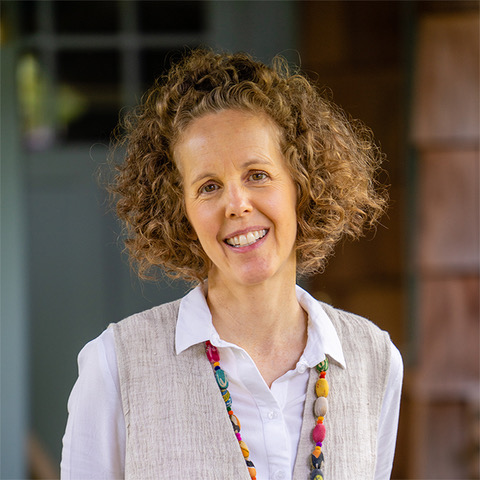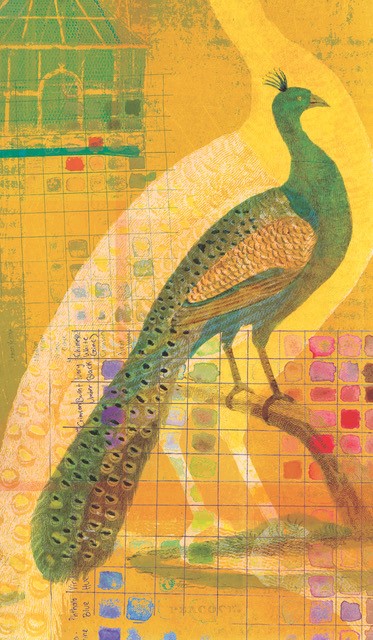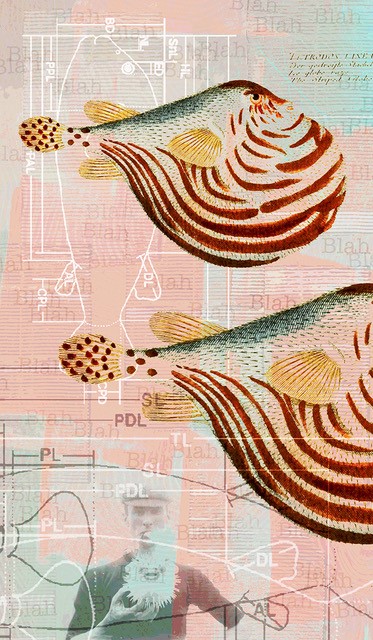Historic Art Meets Modern Art: Artist’s Recent Works Highlight BHL Images

Peacock. A Natural History of Birds, Fishes, Reptiles, and Insects (1845). Contributed in BHL from Smithsonian Libraries. Downloaded from the BHL Flickr.
Art is an integral part of scientific investigation and documentation. Before the advent of photography, illustrations were used to capture the natural world and share it with broader audiences through reproduction via woodcuts, engravings and etchings, and lithography in natural history publications. Even today, scientific illustration is important, articulating morphological, physiological and anatomical features with more detail and clarity than can often be captured through photographs.
With more than five centuries of natural history literature, the Biodiversity Heritage Library’s open access collections include millions of scientific illustrations amongst the Library’s nearly 60 million pages. Since 2011, BHL partners have worked to upload many of these illustrations to Flickr. Recent publicity from a myraid of outlets including Colossal, My Modern Met, Open Culture, Atlas Obscura, Lifehacker, and Vice has generated wide public interest in BHL’s Flickr collections, which in 2020 included over 180,000 images freely available to browse, download, and reuse. The images are curated by volume and searchable by subject and, in many cases, scientific names thanks to tags added as part of our Flickr tagging citizen science project.
These illustrations are useful for communities in a wide range of disciplines. Our audiences have shared how they use these illustrations to support studies in the sciences, such as identifying the earliest observations on heterostyly in plants, researching the history of herbaria, and revisiting the legacy of women in science. Citizen scientists make use of these resources on platforms like Wikipedia and to research the identities of natural history artists.
Given that these illustrations are works of art, it’s not surprising that these collections are also providing a wealth of inspiration for artists like Dee Etzwiler, who recently used BHL images within nine pieces she created for a group show — Conversations: Reflections of 14 Women Artists — exhibited at the Maude Kerns Art Center (Eugene, OR) from 10 January – 7 February 2020.

Dee Etzwiler’s artworks incorporating BHL imagery, delivered for the group show — Conversations: Reflections of 14 Women Artists — exhibited at the Maude Kerns Art Center (Eugene, OR) from 10 January – 7 February 2020. Photo credit: D. Etzwiler on Instagram.

Photo by: Eric Merrow | @MerrowVisuals (www.merrowvisuals.com)
“As an artist, BHL offers a wealth of imagery for me to explore and discover,” affirms Etzwiler. “The images are abundant in number and are superb in beauty, diversity and quality.”
With a background in art and a master’s degree in architecture, Etzwiler combined her skills to found her own commercial art firm in 2012, where she works collaboratively with clients to create custom artworks. While most of her work is client driven, Conversations gave Etzwiler an opportunity to create a body of work driven by her own interests and influences.
It was while conducting image research in 2019 for these artworks that Etzwiler first discovered BHL.
“I had decided to create a number of pieces to represent different adjectives that describe conversations,” explains Etzwiler. “While conducting research, I discovered a scorpion image on the BHL Flickr that became central to one of my pieces. This was the first BHL image I started to seriously digitally manipulate, and the piece quickly developed into an exciting work. I decided that my entire body of work for the Conversations group show would revolve around BHL inspiring images.”

Scorpion image from the Biodiversity Heritage Library which Etzwiler incorporated into her artwork, ‘Stinging’ (2019). Plate CCLIII. Die Arachniden, Bd. 8-10 (1841-43). Contributed in BHL from the Ernst Mayr Library, Museum of Comparative Zoology, Harvard University. Downloaded from the BHL Flickr.

‘Stinging’. Artwork by Dee Etzwiler for the group show — Conversations: Reflections of 14 Women Artists — exhibited at the Maude Kerns Art Center (Eugene, OR) from 10 January – 7 February 2020. © Etzwiler 2019. Reproduced with permission from D. Etzwiler.
When looking for BHL imagery to incorporate into her art, Etzwiler starts by conducting searches in the BHL Flickr by common name, scientific name, and other related words so that she can uncover a wide range of potential images with which to work. Once she selects an image, she downloads a full size file and imports it into a Photoshop file where she layers it with textures, images and colors to develop her artwork. Once completed, the art is commercially printed, making use of a variety of printing substrates — fine art paper, metal, acrylic, wood, canvas, fabric, and more.

‘Colorful’. Artwork by Dee Etzwiler for the group show — Conversations: Reflections of 14 Women Artists — exhibited at the Maude Kerns Art Center (Eugene, OR) from 10 January – 7 February 2020. © Etzwiler 2019. Reproduced with permission from D. Etzwiler.
Incorporating artwork from BHL: Peacock. A Natural History of Birds, Fishes, Reptiles, and Insects (1845). Contributed in BHL from Smithsonian Libraries. Downloaded from the BHL Flickr.
BHL has made incorporating these historic illustrations into her own artworks extremely easy.
“I love how easily I can search the images in Flickr and how well the images are organized and displayed,” asserts Etzwiler. “I love that I can view images in greater detail and download them in a variety of sizes and resolutions. Having access to copyright information is very important, too. It was so much fun to create this body of work, and I am grateful that I committed to this idea.”

‘Valuable’. Artwork by Dee Etzwiler for the group show — Conversations: Reflections of 14 Women Artists — exhibited at the Maude Kerns Art Center (Eugene, OR) from 10 January – 7 February 2020. © Etzwiler 2019. Reproduced with permission from D. Etzwiler.
Incorporating artwork from BHL: Plate XXXVII. The Great Barrier Reef of Australia (1893). Contributed in BHL from Smithsonian Libraries. Downloaded from the BHL Flickr.
Etzwiler enjoyed her experience working with BHL images so much, she intends to continue to use these collections in her pieces. In fact, this experience has had a deep impact on her artistic interests and the future direction of her work.
“My work with BHL’s images has greatly increased my interest in creating science-related art, which has now become a focus of my work as I move forward,” shares Etzwiler. “With the current coronavirus pandemic, I will be focused on this science-related work in my studio. I know that BHL assists those in the science community, but it has also made a big impact on my life as an artist and I am grateful.”

‘Long-Winded’. Artwork by Dee Etzwiler for the group show — Conversations: Reflections of 14 Women Artists — exhibited at the Maude Kerns Art Center (Eugene, OR) from 10 January – 7 February 2020. © Etzwiler 2019. Reproduced with permission from D. Etzwiler.
Incorporating artwork from BHL: Pl. 141. Ichthyologie, v. 1 Plate (1796). Contributed in BHL from the Ernst Mayr Library, Museum of Comparative Zoology, Harvard University. Downloaded from the BHL Flickr.
BHL’s open access digital library portal allows anyone to freely access valuable literature and beautiful images from anywhere — even at home and when access to physical collections is not possible. We’re grateful to our global partners for making their collections freely available — empowering research, learning, and creativity, no matter where you are.
Thank you to Dee Etzwiler and others in our global community for letting us know how valuable and inspirational BHL’s collections are in so many ways and for so many people.

‘The Gathering’. A patchwork of pieces from the original 8 images created by Dee Etzwiler for the group show — Conversations: Reflections of 14 Women Artists — exhibited at the Maude Kerns Art Center (Eugene, OR) from 10 January – 7 February 2020. The original 8 pieces represent conversation types, so this large piece represents a hypothetical social gathering.
© Etzwiler 2019. Reproduced with permission from D. Etzwiler.





Everything about this is fantastic! I am happy to learn that these illustrations are being used in contemporary pieces; plus, it is delightful to know that my work tagging images makes them more readily available for artists to browse and enjoy. Thank you so much for sharing this!